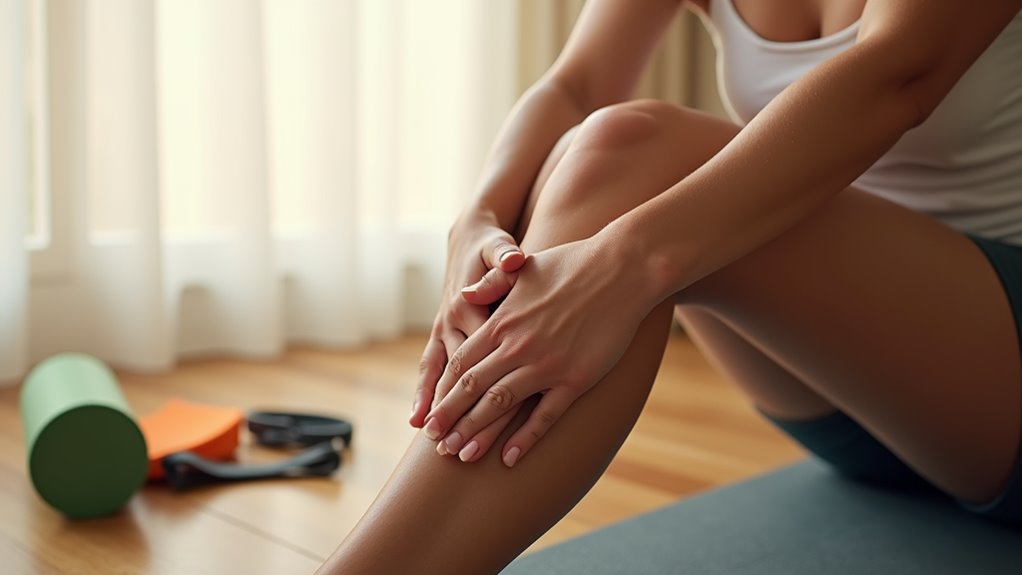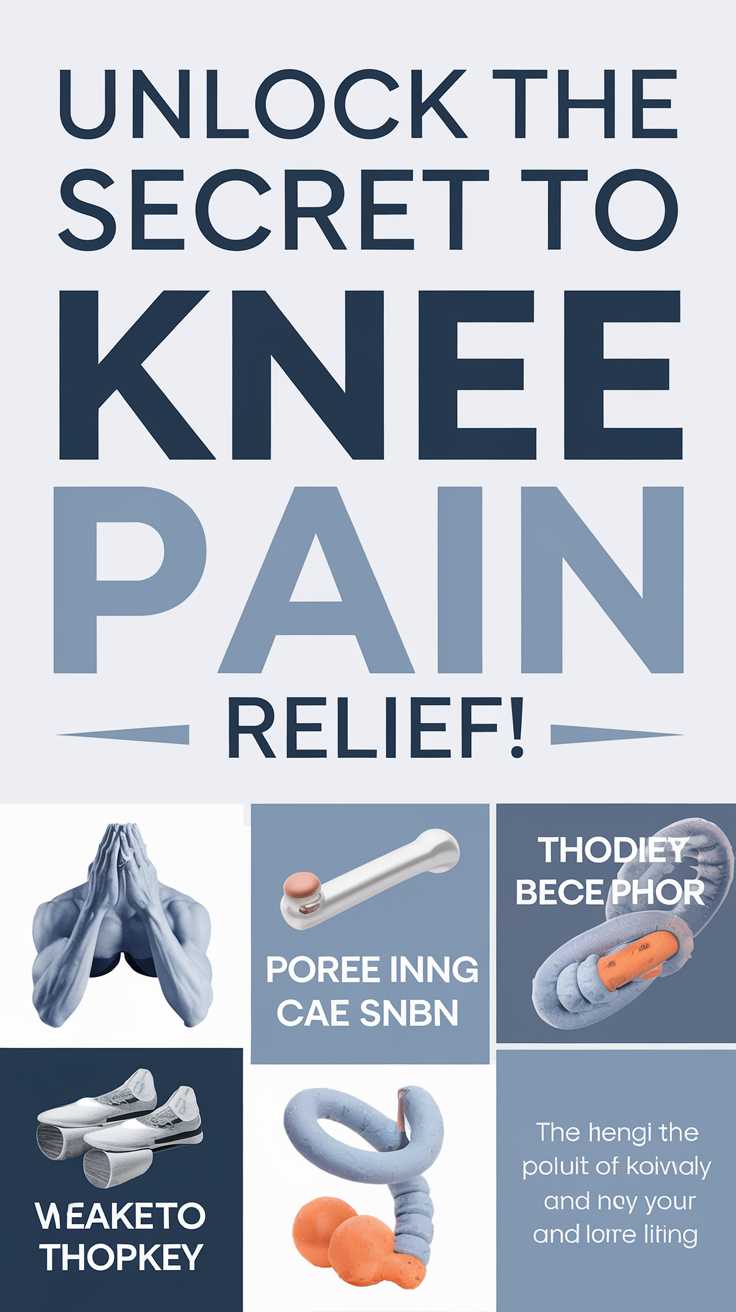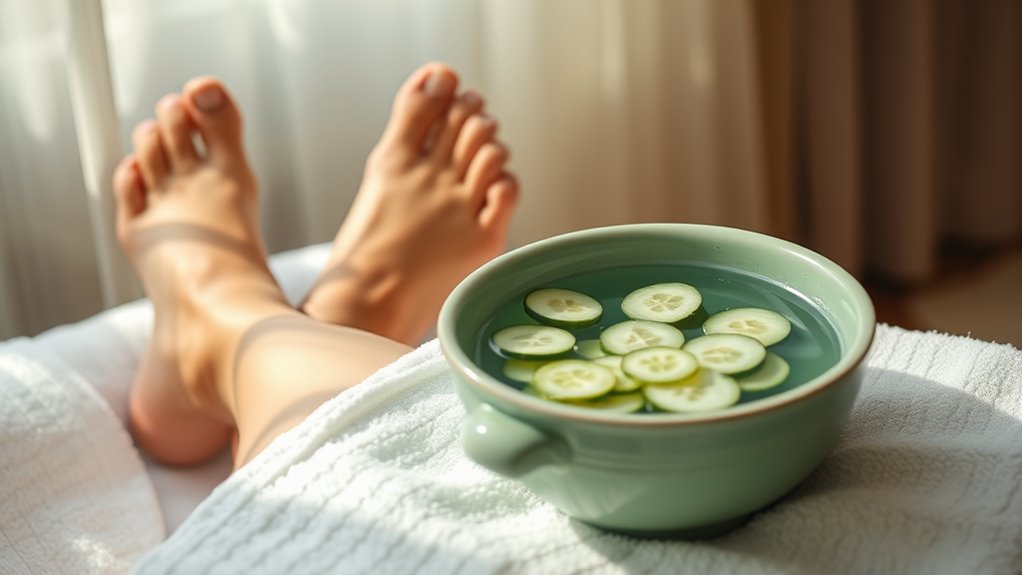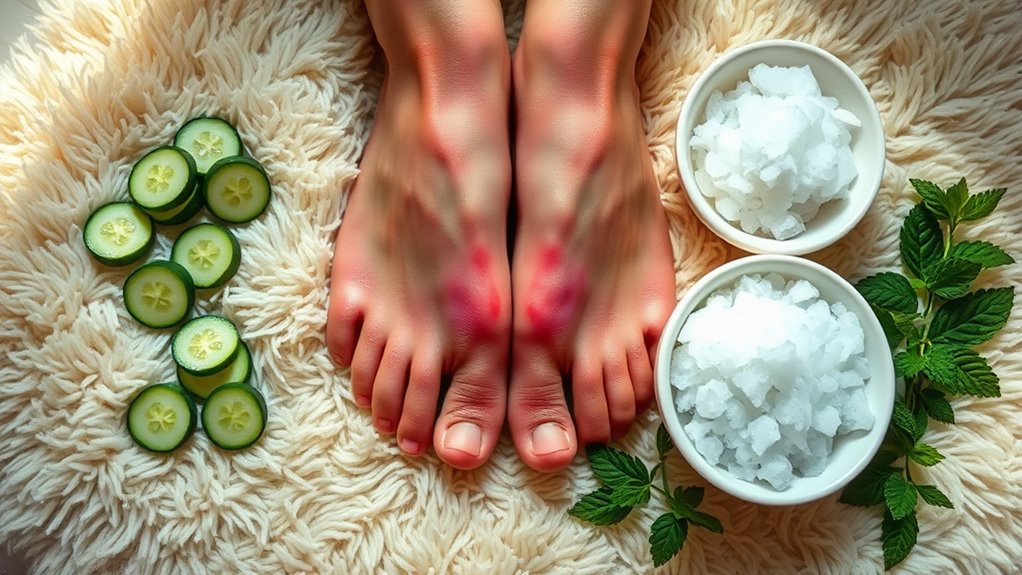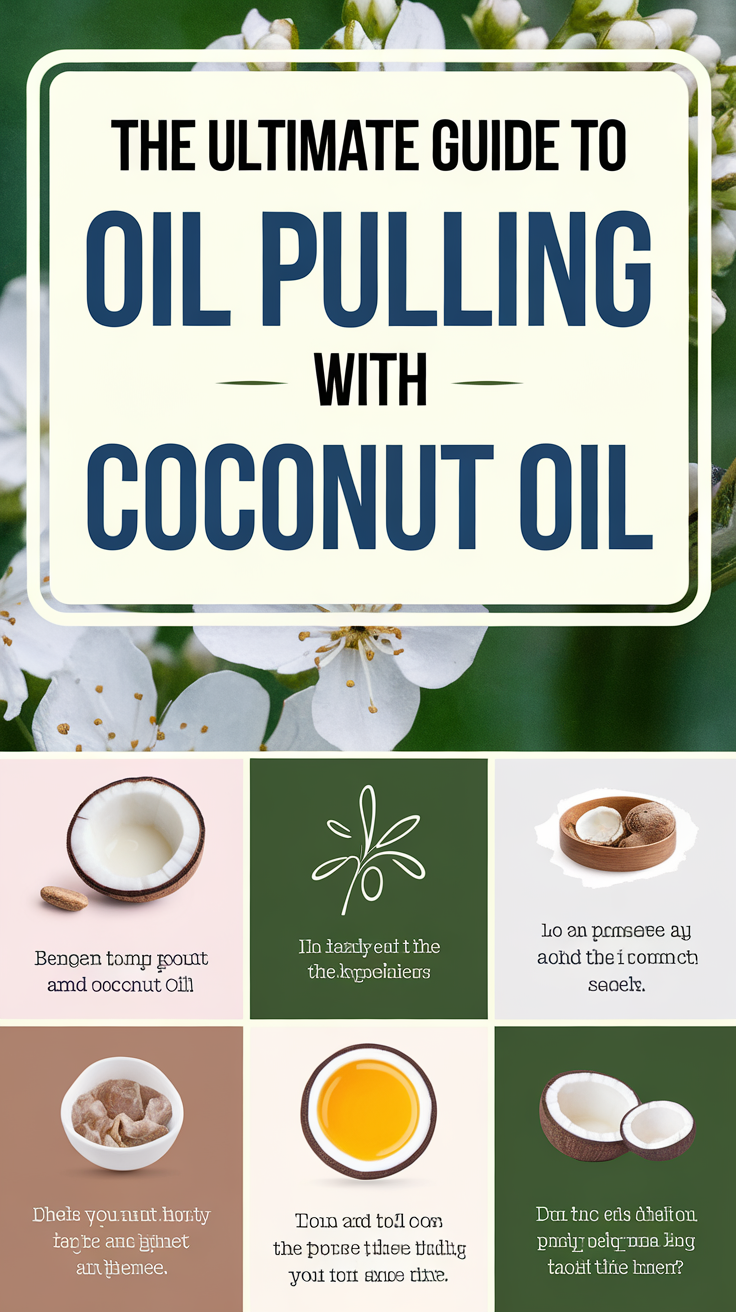Unlock the Secret to Knee Pain Relief!
You can conquer knee pain by taking a multi-faceted approach to relief. Start with gentle stretches targeting your hamstrings, quads, and calves, while incorporating natural anti-inflammatory foods like turmeric and ginger into your diet. Focus on low-impact exercises, maintain a healthy weight, and consider physical therapy techniques to strengthen supporting muscles. By understanding the root causes and implementing these proven strategies, you’ll discover your path to lasting knee comfort.
Key Takeaways
-
Practice daily stretches targeting hamstrings, quadriceps, and calves to improve flexibility and reduce knee strain.
-
Maintain a healthy weight through diet and exercise, as each pound lost reduces four pounds of knee pressure.
-
Include natural anti-inflammatory foods like turmeric, ginger, and fish rich in omega-3s in your daily diet.
-
Strengthen muscles around the knee with low-impact exercises like straight leg raises and wall slides.
-
Consider alternative therapies like acupuncture, yoga, or tai chi to enhance joint stability and manage pain.
Understanding Common Causes of Knee Pain
As your knees absorb force with every step, they’re particularly vulnerable to injury and wear.
Like many others dealing with knee discomfort, you’ll want to identify what’s causing your pain before exploring knee pain remedies.
Common causes include osteoarthritis, where cartilage gradually breaks down, and runner’s knee, which affects many active individuals.
You might also experience knee pain from injuries like torn ligaments or meniscus damage, often occurring during sports or sudden movements.
Being overweight can put extra stress on your knees, while poor posture and muscle imbalances may lead to misalignment issues.
Don’t worry – you’re not alone in this.
Understanding these causes is your first step toward finding relief and getting back to the activities you love.
Signs and Symptoms to Watch For
When experiencing knee pain, it’s crucial to recognize the specific signs that can indicate the severity and nature of your condition.
You’ll want to pay attention to swelling, redness, and warmth around your knee joint, as these symptoms often suggest inflammation. If you’re noticing clicking or popping sounds when you move, or your knee feels unstable or gives way, you might’ve a mechanical issue that needs attention.
Watch for pain that worsens with activity or persists during rest, particularly if it’s accompanied by stiffness in the morning.
You should also note if you’re having difficulty bearing weight, climbing stairs, or fully extending your knee. These symptoms can help you and your healthcare provider determine the best course of action for your recovery.
The Role of Inflammation in Knee Discomfort
Inflammation plays a central role in knee pain and can affect your joint’s overall function. When your knee experiences injury or stress, your body’s natural defense system triggers an inflammatory response, sending blood and healing compounds to the area.
While this response is meant to help you heal, persistent inflammation can lead to ongoing discomfort and reduced mobility.
You’ll notice classic signs of inflammation in your knee: redness, swelling, warmth, and pain. These symptoms occur because your blood vessels dilate and release fluid into the surrounding tissues.
If you’re dealing with chronic knee issues, long-term inflammation might be damaging your cartilage and other joint structures. Understanding this process helps you make informed decisions about treatment options, whether it’s ice therapy, anti-inflammatory medications, or lifestyle changes to reduce inflammatory triggers.
Essential Stretches for Knee Pain Relief
Regular stretching provides one of the most effective ways to manage and reduce knee pain. You’ll find relief by incorporating these proven stretches into your daily routine.
Start with gentle hamstring stretches while lying on your back, using a towel or resistance band to pull your extended leg toward you. Next, try the quadriceps stretch by standing on one leg and pulling your other foot toward your buttocks.
Don’t forget about your calf muscles – they’re essential for knee stability. Stand facing a wall, step one foot forward, and lean in while keeping your back leg straight.
For an IT band stretch, cross one leg behind the other while leaning sideways. Remember to hold each stretch for 30 seconds and never push through sharp pain.
Strengthening Exercises to Support Your Knees
Building strength in the muscles surrounding your knees provides essential support for these hardworking joints.
You’ll want to focus on exercises that target your quadriceps, hamstrings, and calf muscles – all key players in knee stability.
Start with wall sits, holding the position for 30 seconds while keeping your back flat against the wall.
Add straight leg raises while lying on your back, and progress to standing calf raises.
When you’re ready, try step-ups on a sturdy platform and mini squats with proper form.
Begin with 10 repetitions of each exercise, working up to 3 sets as you gain strength.
Remember to move slowly and controlled – you’re not competing with anyone.
If you feel pain during any exercise, stop and consult your healthcare provider.
Natural Anti-Inflammatory Remedies
When knee pain flares up, natural remedies can help reduce inflammation without relying on over-the-counter medications.
You’ll find relief with turmeric, a powerful spice that works similarly to ibuprofen. Just mix it with black pepper and warm milk for better absorption.
Ginger tea can also ease your discomfort, while tart cherry juice reduces inflammatory markers in your joints.
You can apply cold-pressed coconut oil directly to your knees for its anti-inflammatory properties.
Fish oil supplements rich in omega-3s work wonders when you take them daily.
Don’t forget about bromelain, an enzyme found in pineapple that fights inflammation naturally.
For a soothing compress, wrap crushed ice in a thin towel and alternate with warm green tea bags – you’ll feel the difference in minutes.
Proper Posture and Body Mechanics
Maintaining correct posture throughout your day greatly impacts knee health and pain management. When you’re standing, keep your weight evenly distributed between both feet, with knees slightly bent to reduce joint stress. Your shoulders should align with your hips, and your head should stay level.
While sitting, position your feet flat on the floor with knees at a 90-degree angle. Don’t cross your legs, as this creates uneven pressure on your knee joints.
When lifting objects, bend at your knees instead of your waist, keeping your back straight and core engaged. Remember to pivot your entire body when turning, rather than twisting at the knees.
These simple adjustments to your daily movements can considerably reduce knee strain and prevent further damage to your joints.
Choosing the Right Footwear
Since proper footwear serves as your foundation for knee health, selecting the right shoes is essential for managing and preventing knee pain. You’ll want to focus on shoes that provide adequate support, cushioning, and stability for your specific needs.
| Feature | Benefits | Best For |
|---|---|---|
| Arch Support | Distributes pressure evenly | Flat feet or high arches |
| Cushioning | Absorbs impact | Running or high-impact activities |
| Wide Toe Box | Allows natural toe spread | Bunions or toe discomfort |
| Heel Support | Stabilizes foot alignment | Overpronation issues |
| Lightweight | Reduces joint stress | Daily walking and standing |
Remember to replace your shoes every 400-500 miles or when the soles show significant wear. Your fellow knee pain warriors know that investing in quality footwear now prevents bigger problems later.
Heat vs. Cold Therapy: What Works Best
As you manage knee pain, understanding whether to use heat or cold therapy can greatly impact your relief and recovery.
You’ll want to use cold therapy during the first 48-72 hours after an acute injury or when your knee feels hot and inflamed. Apply an ice pack for 15-20 minutes at a time to reduce swelling and numb pain.
Heat therapy works best for chronic knee pain and stiffness, especially before activities. You can use a heating pad or warm towel for 15-20 minutes to increase blood flow and relax tight muscles.
Many people in our community find that alternating between heat and cold provides the best relief. Just remember: cold reduces swelling and inflammation, while heat improves flexibility and circulation.
Listen to your body – it’ll tell you which treatment feels most effective.
Diet Modifications for Joint Health
While heat and cold therapy target external pain relief, your diet plays a powerful role in managing knee discomfort from within.
You’ll want to focus on anti-inflammatory foods like fatty fish, berries, and leafy greens to reduce joint inflammation naturally. Adding turmeric and ginger to your meals can boost your body’s healing response.
Just as important as what you add is what you avoid. Cut back on processed foods, refined sugars, and excessive red meat – they’re known to increase inflammation in your joints.
Instead, join the growing community of knee pain warriors who’ve discovered the benefits of a Mediterranean-style diet.
Don’t forget to stay hydrated; water helps maintain the synovial fluid that keeps your joints moving smoothly.
Weight Management Strategies
Every extra pound adds four pounds of pressure on your knees, making weight management essential for pain relief.
You’re not alone in this journey – many people find success by starting with small, sustainable changes. Set realistic goals by aiming to lose 1-2 pounds per week through a combination of diet and exercise.
Track your daily calories using a smartphone app, and join a supportive community that shares your goals.
Consider walking in a pool or using a stationary bike, as these activities are gentle on your knees while burning calories.
Remember to celebrate your progress – even a 10% reduction in body weight can greatly reduce knee pain.
Partner with your healthcare provider to create a personalized plan that works for your lifestyle and specific needs.
Physical Therapy Techniques
Physical therapy stands at the forefront of knee pain management, offering targeted exercises and techniques you can learn and practice. You’ll find relief through proven methods that thousands have successfully used to overcome knee discomfort.
| Exercise Type | Benefits |
|---|---|
| Straight Leg Raises | Strengthens quadriceps without joint stress |
| Wall Slides | Improves knee stability and control |
| Heel Slides | Increases flexibility and range of motion |
| Hamstring Stretches | Reduces tension behind the knee |
| Balance Training | Enhances joint stability and coordination |
Your journey to recovery starts with these foundational movements. Master each technique gradually, focusing on proper form rather than speed. Remember, you’re joining countless others who’ve found success through dedicated physical therapy practice. When performed consistently, these exercises become powerful tools in your daily routine for maintaining healthy, pain-free knees.
Medical Treatment Options
When conservative treatments aren’t enough, medical interventions can provide significant relief from persistent knee pain.
You’ll find several effective options your doctor might recommend, including corticosteroid injections to reduce inflammation, hyaluronic acid supplements to improve joint lubrication, and platelet-rich plasma therapy to promote healing.
For more severe cases, you’re not alone in considering minimally invasive procedures.
These include arthroscopy to repair torn cartilage or remove debris, as well as nerve blocks to interrupt pain signals.
Your healthcare team might also suggest innovative treatments like stem cell therapy or viscosupplementation.
If you’re experiencing advanced joint damage, you may benefit from partial or total knee replacement surgery, which has helped countless others regain their mobility and quality of life.
Alternative Therapies and Solutions
Many people find lasting relief through alternative therapies that complement traditional medical treatments.
You’ll discover that acupuncture can help reduce inflammation and improve circulation, while yoga strengthens your joints and increases flexibility. If you’re looking for gentle yet effective options, tai chi enhances balance and reduces stress on your knees.
You might also benefit from natural remedies like turmeric supplements, known for their anti-inflammatory properties. Regular massage therapy can loosen tight muscles around your knee joint, while heat and cold therapy provide immediate comfort.
Don’t overlook the power of mindfulness meditation, which can help manage chronic pain. These alternatives aren’t just temporary fixes – they’re proven methods that many others in your situation have successfully used to manage knee pain and improve their quality of life.
Preventing Future Knee Problems
Taking preventive steps today can spare you from knee problems tomorrow.
You’ll want to maintain a healthy weight, as every extra pound puts additional stress on your knees. When you exercise, choose low-impact activities like swimming or cycling that won’t strain your joints.
Don’t forget to wear proper footwear that supports your feet and knees, especially during physical activities.
Strengthen your leg muscles through targeted exercises – focus on your quadriceps, hamstrings, and core. These muscles help stabilize your knees and improve your overall balance.
Listen to your body and avoid pushing through pain. If you’re starting a new workout routine, ease into it gradually.
Remember to warm up before exercise and cool down afterward to keep your knees flexible and strong.
Daily Activities to Avoid or Modify
To protect your knees throughout the day, you’ll need to modify or avoid certain routine activities that can strain these essential joints.
Skip high-impact exercises like running on concrete, and opt for swimming or cycling instead. When climbing stairs, take them one at a time and use the handrail for support.
Avoid sitting in low chairs or sofas that make it difficult to stand up, and don’t stay seated for extended periods. When lifting objects, bend at your knees and hips while keeping your back straight. If you’re carrying heavy items, use a cart or dolly.
While standing, shift your weight between legs and avoid locking your knees. During household chores, use tools with long handles to prevent excessive bending and squatting.
Recovery Timeline and Expectations
Once you’ve adjusted your daily routines, you’ll want to understand what lies ahead in your recovery journey. Most mild knee pain cases show improvement within 4-6 weeks when following proper treatment plans.
You’re not alone – many people experience similar timelines.
For moderate cases, you can expect 2-3 months of consistent care before seeing significant results. During this time, you’ll notice gradual improvements in flexibility and reduced pain levels.
More severe cases may require 6 months or longer, especially if you’re recovering from surgery.
Remember that everyone’s healing process is unique. While some of your fellow knee pain warriors might recover faster or slower, focus on your progress.
Stay committed to your treatment plan, and you’ll reach your recovery goals.
When to Seek Professional Help
While mild knee pain often improves with self-care, certain symptoms demand immediate medical attention. Don’t hesitate to call your doctor if you’re experiencing severe swelling, redness, or warmth around the joint, as these could indicate infection.
You’ll also want professional help if you can’t bear weight on your knee or if it feels unstable.
Seek emergency care if you’ve suffered a serious injury, hear a popping sound followed by intense pain, or notice significant deformity.
If your knee pain persists for more than a few weeks despite rest and home remedies, it’s time to get checked out.
Frequently Asked Questions
Can I Still Participate in Low-Impact Sports With Chronic Knee Pain?
You can enjoy low-impact activities like swimming, cycling, and elliptical workouts with knee pain. Just listen to your body, wear proper support, and don’t push beyond your comfort zone.
Is Knee Pain During Pregnancy Normal, and What Makes It Different?
You’re not alone – pregnancy knee pain is normal due to hormonal changes and extra weight. You’ll notice it’s different because relaxin hormone loosens your joints more than typical knee pain.
How Does Altitude or Weather Changes Affect Knee Pain Intensity?
You’ll notice your knee pain can worsen at higher altitudes or when storms approach, as barometric pressure changes affect joint fluid and tissue inflammation. Cold weather also stiffens your joints.
Why Do My Knees Make Cracking Sounds but Don’t Hurt?
You’re hearing crepitus, which happens when gas bubbles pop in your joint fluid or when tendons move across bones. It’s usually harmless when there’s no pain involved.
Are Knee Braces Effective for Sleeping, and Which Type Is Best?
You’ll find knee braces aren’t typically needed for sleeping unless you’ve got specific injuries. If you must wear one, choose a lightweight compression sleeve that won’t restrict your natural movement while resting.

